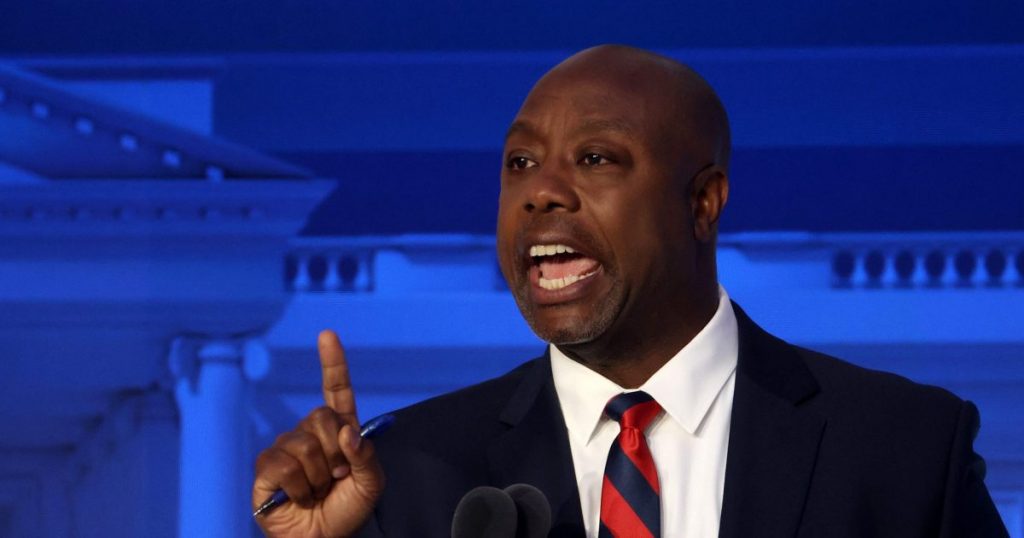No, Tim Scott: Cutting Taxes Won’t Fix America’s Child Care Crisis
Photo by Justin Sullivan/Getty Images
Fight disinformation: Sign up for the free Mother Jones Daily newsletter and follow the news that matters.Saturday isn’t just the deadline for Congress to fund the government. It’s also the day that the $24 billion pandemic-era program to prop up the nation’s struggling child care network comes to an end.
The elimination of that funding could result in some 70,000 child care centers closing across the United States, according to a report by the Century Foundation, a liberal think tank. As I wrote earlier this week, many of the centers that don’t shutter will have hard decisions to make—they’ll either have to raise the rates that families pay or reduce staff wages, which will lead to staff departures. Due to strict laws about adult-to-child ratios, fewer teachers would mean fewer classrooms can be open. And fewer classrooms could mean 3.2 million fewer child care slots, the Century Foundation report predicts.
Sen. Tim Scott’s grand solution to this ginormous problem? Lower taxes.
“Under the Biden Administration, the cost for day care has gone over $15,000 per child,” the South Carolina Republican said at the GOP presidential debate Wednesday night. “The way we fix that problem is to make sure that we actually cut taxes and give Americans more of their money back.”
His explanation is that by lowering parents’ taxes, they will have “more resources to make the decisions how to take care of their family.”
But the dilemma behind the looming child care crisis isn’t just that costs are too high; it’s that despite the high costs, staff pay is still abysmally low due to the number of workers centers need to employ to keep kids safe. This makes it very hard for child care centers to employ enough staff, stay profitable, and stay open.
As I wrote Tuesday:
Maintaining high staffing levels often means paying staff low wages, relative to other service industries. Nationally, the median wage for a childcare provider is just $13.71 per hour, according to the Bureau of Labor Statistics.
Thus, “the people doing the work still aren’t making a wage that they can take care of their own families,” Susan Gale Perry, the CEO of Childcare Aware of America, told me.
The solution also isn’t as simple as centers raising tuition, even if some parents can afford to pay more due to a slightly lower tax liability. In my earlier story, Melissa Colagrosso, the owner of a day care center in West Virginia, explained that 78 percent of kids at her business are from low-income families that qualify for a federal program that pays Colagrosso a lower tuition rate based on a sliding scale. In order to make up for the lower rates coming from those families, Colagrosso can raise rates on families paying full tuition, but not by so much that they are priced out of care.
Last year, Scott actually proposed a bill to expand eligibility for that federal program, the Child Care Development Block Grant. It theoretically would have made more families eligible for free or reduced-price child care and would have—again, in theory—capped child care costs for eligible families at 7 percent of their household income. But already, the CCDBG only serves 14 percent of the kids who qualify, due to limited funding from Congress.
The bill never advanced, probably because making it happen would require more federal funding, which either comes from deficit spending, cuts to other programs, or…you guessed it…raising taxes—the exact opposite of what Scott suggested on the debate stage.





